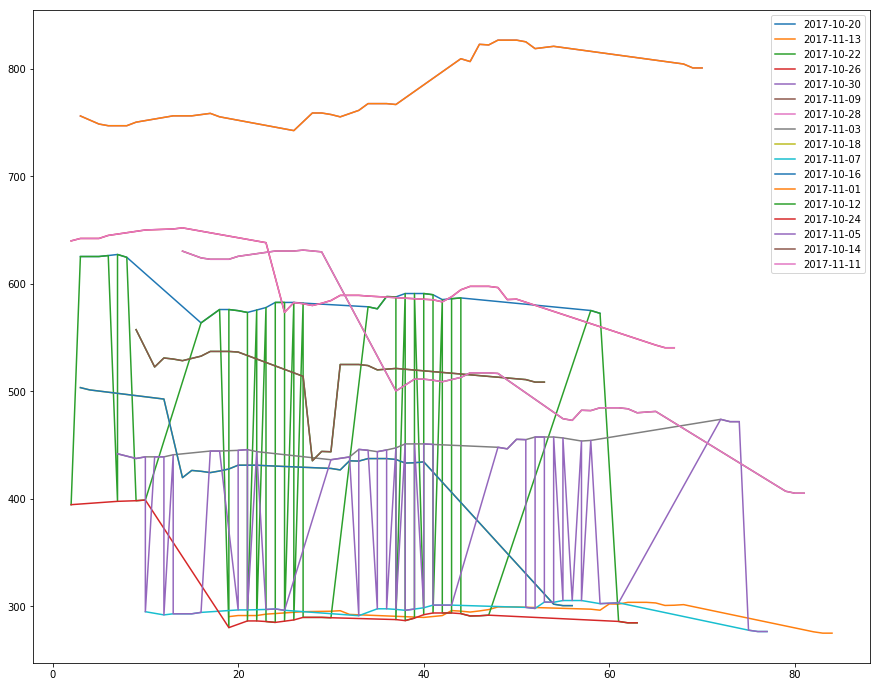I have chosen the topic of "Predicting future airfare using past data" for my project and would love to get inputs on the best models to use.
Data Set
The data set consists of 6 months of time series data for every onward and return journey dates spaced by 8 days for a particular route. So, for the trip of 1 Oct-9 Oct, 2017, I have the flight price checked every day from 1 Apr to 30 Sep. I have this data for every trip date from 1 July, 2017 to 15 Oct, 2017.
Data Format
(Fake Data)
+--------------------+-----------+--------------------+--------------------------+---------------+
| requestDate | price | tripStartDeparture | tripDestinationDeparture | flightCarrier |
+--------------------+-----------+--------------------+--------------------------+---------------+
| 14APR2017:00:00:00 | 725.32 | 16SEP2017:10:50:02 | 23SEP2017:21:55:04 | XA |
+--------------------+-----------+--------------------+--------------------------+---------------+
| 15APR2017:00:00:00 | 966.32 | 16SEP2017:13:20:02 | 23SEP2017:19:00:04 | XA |
+--------------------+-----------+--------------------+--------------------------+---------------+
| 16APR2017:00:00:00 | 915.32 | 16SEP2017:13:20:02 | 23SEP2017:21:55:04 | XA |
+--------------------+-----------+--------------------+--------------------------+---------------+
+--------------------+-----------+--------------------+--------------------------+---------------+
| 16APR2017:00:00:00 | 825.32 | 16SEP2017:10:50:02 | 23SEP2017:21:55:04 | XA |
+--------------------+-----------+--------------------+--------------------------+---------------+
| 16APR2017:00:00:00 | 969.32 | 11SEP2017:13:20:02 | 18SEP2017:19:00:04 | XA |
+--------------------+-----------+--------------------+--------------------------+---------------+
| 16APR2017:00:00:00 | 918.32 | 06SEP2017:13:20:02 | 13SEP2017:21:55:04 | XA |
+--------------------+-----------+--------------------+--------------------------+---------------+
Data Exploration
Variation in price for different start dates. X-axis: (Observation date - start date).days, Y-axis: Price in USD
Goal
For a given trip dates, the goal is to predict the price in the future, given the price today.
Approach
Despite the data being for 6 months for each trip date, airfares are mostly constant in until about 120 days before departure. It becomes quite noisy in those 120 days. Most probably, because 120 data points are little for time series forecasting, ARIMA did not perform very well. However, I think it is possible to create a way better model utilizing the data for all the data for all trips from 1 July, 2017 to 15 Oct, 2017.
I would love to hear about possible approaches. Thank you for reading this wall of text.

